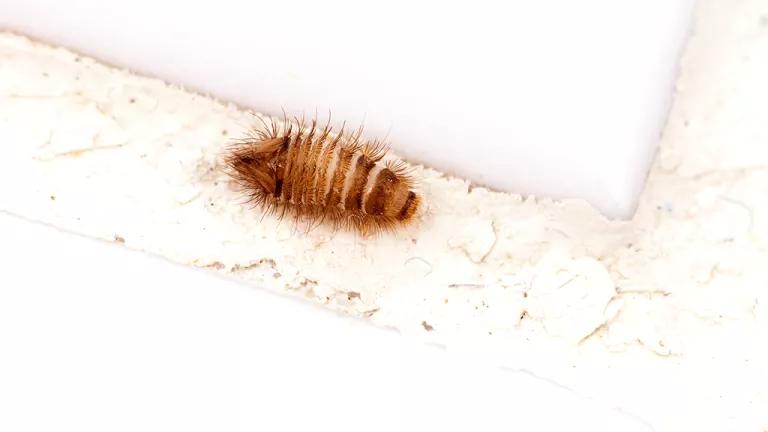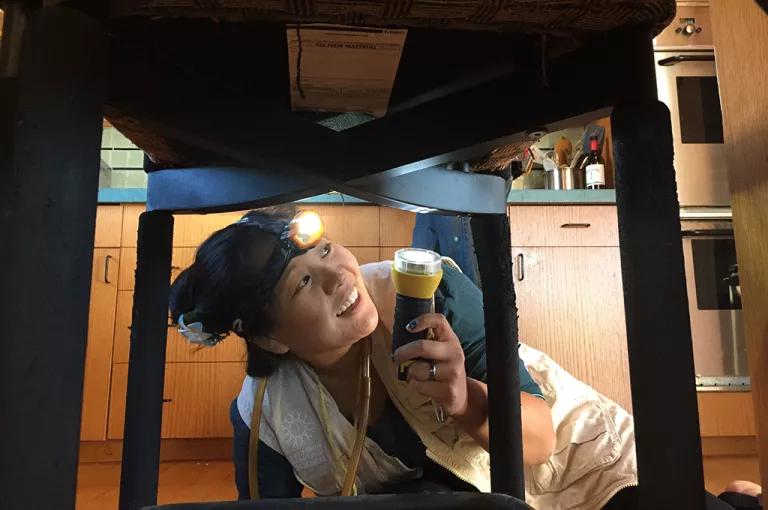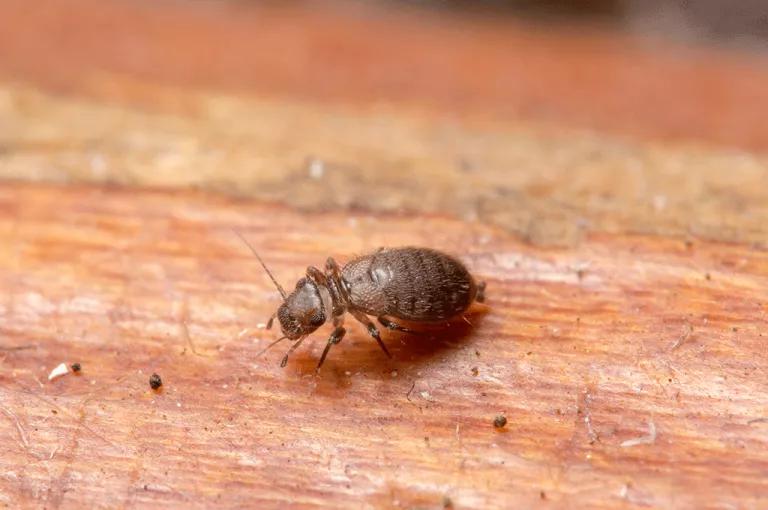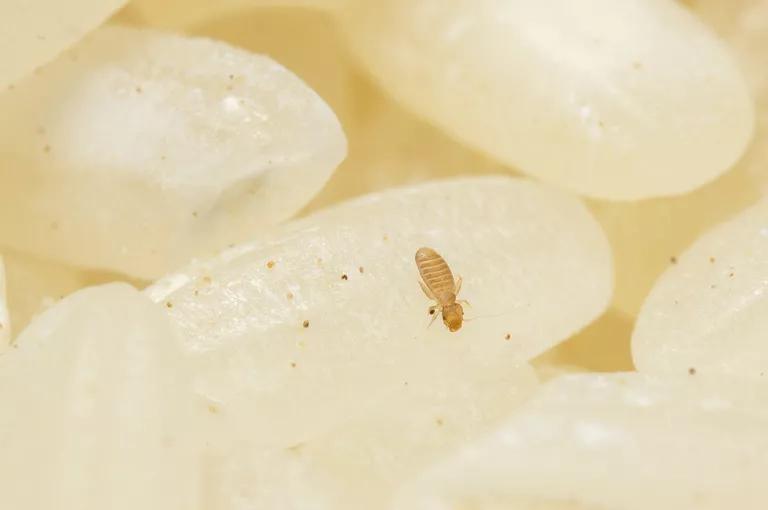Home Invasion
Forget cockroaches—around 100 species of bugs are crawling around our houses (and faces).

An Anthrenus larva from a bathroom
Photo: Matt Bertone
Misha Leong is itching to get inside Chris McCluney’s house. It’s a lovely place in Marin County, just north of San Francisco, built on stilts alongside a creek and accessible only via a boardwalk. But Leong, an entomologist at the California Academy of Sciences, isn’t interested in the view. She’s come to survey the bugs that live with McCluney.
“I don’t know that you’ll find much,” says McCluney, a docent at the academy, gesturing to a tidy living room, dining room, and kitchen.
“I can guarantee we’ll find at least 30 species,” Leong replies with a smile.
Mention “bug” and “house” and most people think “cockroach.” But the researchers have found that homes typically contain more than 100 species of insects and arthropods, some many more than that. Leong and her colleagues are sampling homes across the globe from the Bay Area to Sweden to Peru. Their study, “Arthropods of Our Homes,” aims to take a close look at dwellings on all seven continents to better understand how we humans affect the evolution of our invisible roommates. In January, the team heads to Australia and Tasmania.

Poking around under chairs, peering at stove backsplashes, and scrutinizing windowsills for creepy-crawlies inside a house could shed light on the biodiversity outside, says Michelle Trautwein, an entomologist who oversees the project and the academy’s extensive fly collection (an impressive 90,000-plus specimens). In general, the greater the number of bugs they find within homes, the greener the surrounding environment is. “Houses are a trap and filter for the landscape,” she says. “To some extent, we get an idea of how rich or poor the diversity of an area is.”
That’s part of the reason Leong is so interested in sampling McCluney’s place. Unlike the more urban San Francisco and East Bay homes they’ve already picked over, his house is surrounded by nature. It will likely be a while, however, before Leong can tell McCluney that his living room isn’t quite so bug-free as he thinks. “Sampling is the easy part; sorting through and identifying the species can take months,” she says.

Even so, the usual suspects—like dust mites and flies—will likely rear their heads (and thoraxes). As she gets to work in McCluney’s dining room, wearing a headlamp, knee pads, and khaki vest with vials, tweezers, and paintbrushes stuffing the pockets, Leong wouldn’t look out of place on a jungle excursion. Around her neck hang a lens and a pooter (a long rubber tube with a plastic vial stuck on one end, used to suck up spiders before they scurry out of reach).
She’s sure she’ll find tiny flies called gall midges, which typically float in the air in most people’s houses. And dust mites, the little guys that vacuum up the skin cells we shed, as well as carpet beetles, whose larvae scavenge everything from dead insects to fur to fingernail clippings. “One of my favorites is book lice,” Leong says, scooting along a sliding door, using tweezers to snatch a live cucumber beetle and deposit it in a vial. They’ve found book lice, relatives of head lice that subsist entirely on fungi and mold, in every house they’ve sampled, here and abroad. “They’re running around on the floor on these chubby little legs.”
“Ooh, and maybe we’ll see a pseudo-scorpion,” she adds. They look like a miniature version of their namesake, sans tail. “They’re cute, but if they were as big as us, they’d be terrifying.”

Over the course of an hour, Leong and her assistant, Shane Bryant, scour the living room, dining room, and kitchen, standing on ladders and crouching beneath chairs in search of bug life. By the time they’re done, they’ve filled half a dozen vials.
“It’s very exciting, more exciting than I expected,” says McCluney. He’s curious to learn about exactly which arthropods he’s living with, and he seems open to sharing his home with any of them. Except maybe carpet beetles, which give him the willies.
He’s more comfortable with another of Trautwein’s subjects as she endeavors to understand arthropod evolution: face mites. Just as all of our houses have gall midges, all of our faces provide sanctuary to legions of these tiny creatures. Yes, on your face, right now. They bury themselves head-first into hair follicles and devour the oils we secrete. At long last, we’re finally getting to know our nearest neighbors, even if some of them might seem a little too close for comfort.
This article was originally published on onEarth, which is no longer in publication. onEarth was founded in 1979 as the Amicus Journal, an independent magazine of thought and opinion on the environment. All opinions expressed are those of the authors and do not necessarily reflect the policies or positions of NRDC. This article is available for online republication by news media outlets or nonprofits under these conditions: The writer(s) must be credited with a byline; you must note prominently that the article was originally published by NRDC.org and link to the original; the article cannot be edited (beyond simple things such grammar); you can’t resell the article in any form or grant republishing rights to other outlets; you can’t republish our material wholesale or automatically—you need to select articles individually; you can’t republish the photos or graphics on our site without specific permission; you should drop us a note to let us know when you’ve used one of our articles.
When Customers and Investors Demand Corporate Sustainability
Protecting Biodiversity Means Saving the Bogs (and Peatlands, Swamps, Marshes, Fens…)
How to Make an Effective Public Comment